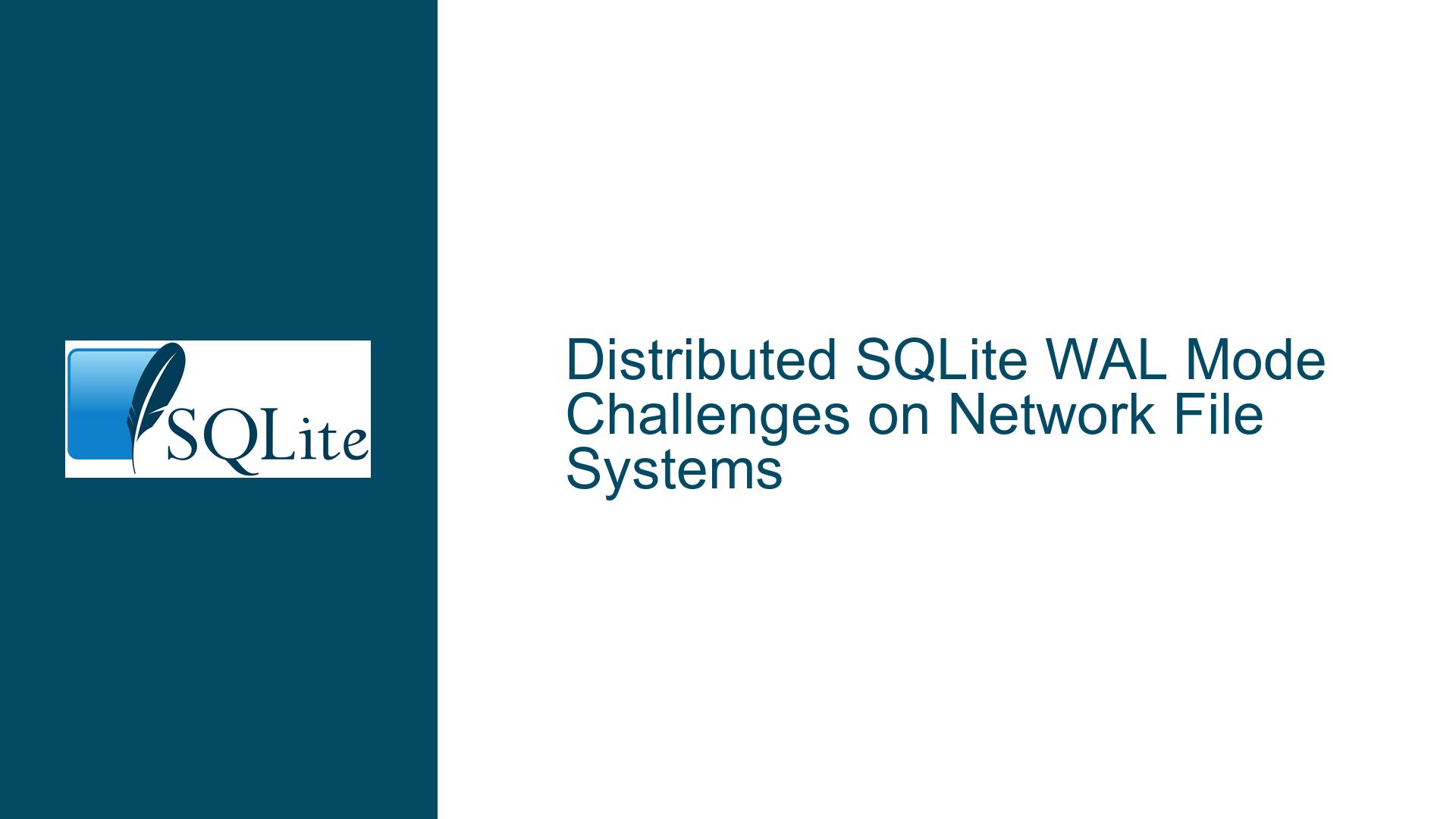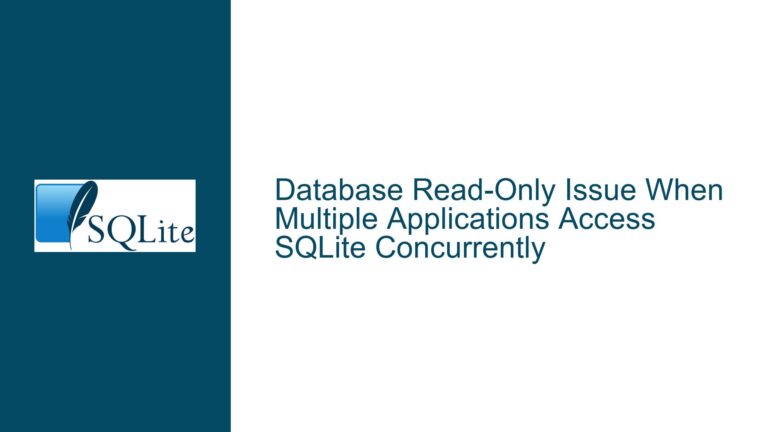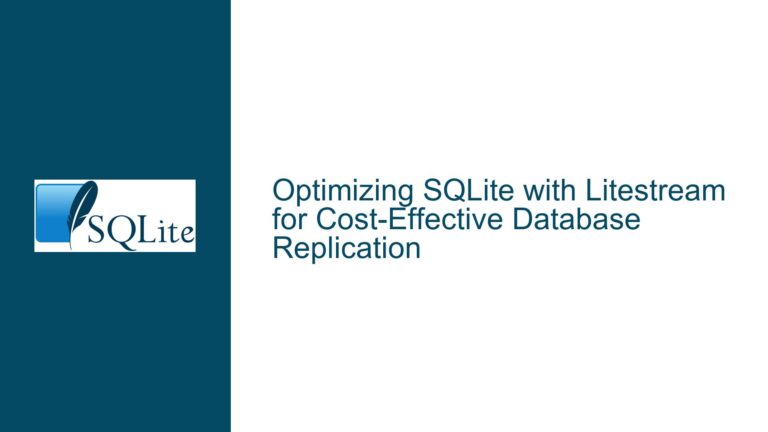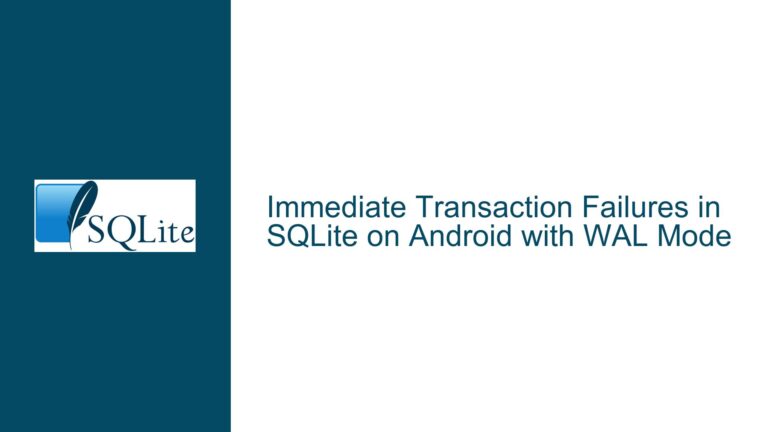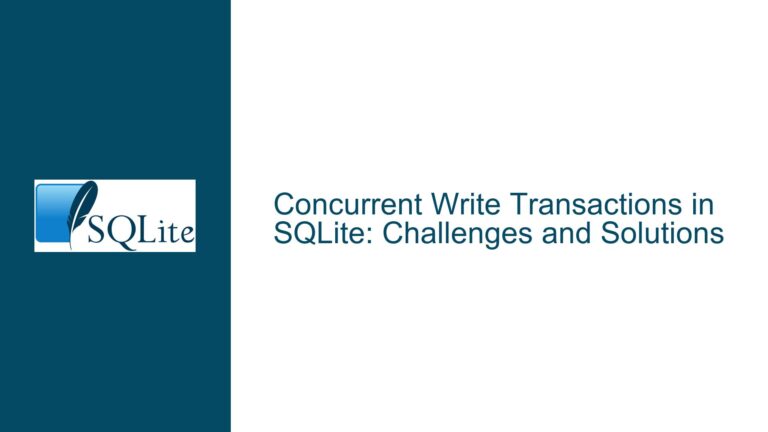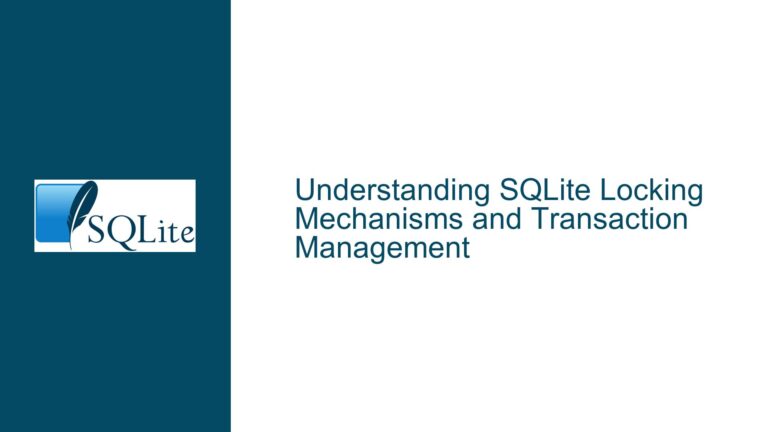Distributed SQLite WAL Mode Challenges on Network File Systems
SQLite WAL Mode and Network File System Limitations
SQLite is a lightweight, serverless database engine that is widely used for its simplicity and efficiency. One of its key features is the Write-Ahead Logging (WAL) mode, which allows for concurrent reads and writes by separating the write operations into a separate log file. However, when SQLite is deployed on a distributed network file system like Ceph, several challenges arise that can lead to performance bottlenecks and potential data corruption.
The primary issue stems from the fact that SQLite’s WAL mode was designed with local file systems in mind, where file locks and shared memory can be efficiently managed. In a distributed environment, these assumptions break down. Network file systems like Ceph, while POSIX-compliant, introduce latency and synchronization issues that can severely impact SQLite’s performance. Specifically, the WAL file, which is crucial for maintaining database consistency, becomes a point of contention when multiple nodes attempt to write to it simultaneously.
In a typical setup, SQLite uses a single WAL file to record all write operations. This file is then periodically merged back into the main database file. In a distributed environment, this single WAL file becomes a bottleneck because it requires exclusive write access, leading to lock contention. Additionally, the network latency introduced by the distributed file system can cause delays in committing transactions, further exacerbating the problem.
Concurrent Writes and WAL File Contention in Distributed Systems
The core of the issue lies in the way SQLite handles concurrent writes in WAL mode. In a local file system, SQLite can efficiently manage concurrent access to the WAL file using file locks and shared memory. However, in a distributed environment, these mechanisms are not sufficient. The network latency and the lack of true shared memory across nodes mean that the WAL file becomes a single point of contention.
When multiple nodes attempt to write to the same WAL file, they must first acquire an exclusive lock. This lock ensures that only one node can write to the WAL file at a time, preventing data corruption. However, in a distributed system, acquiring and releasing this lock involves network round-trips, which can be slow. As a result, the time it takes to commit a transaction increases, leading to reduced throughput and increased latency.
Moreover, the WAL file itself can become fragmented across the network file system. In a system like Ceph, files are often split into multiple objects that are distributed across different nodes. This fragmentation can lead to additional overhead when reading or writing to the WAL file, as the system must coordinate access to these distributed objects. This further compounds the performance issues, making it difficult to achieve high concurrency.
Another significant challenge is the merging of the WAL file back into the main database file. In a local file system, this operation is relatively straightforward and can be done efficiently. However, in a distributed environment, merging the WAL file requires coordinating access to both the WAL file and the main database file across multiple nodes. This coordination can be complex and time-consuming, leading to further performance degradation.
Implementing Distributed WAL Mode with Conflict Resolution
To address these challenges, several modifications to SQLite’s WAL mode can be considered. One approach is to split the WAL file into multiple files, with each node having exclusive write access to its own WAL file. This would allow multiple nodes to write concurrently without contending for a single WAL file. Each node would maintain its own WAL file, and a designated "merger" node would be responsible for periodically merging these WAL files back into the main database file.
However, this approach introduces its own set of challenges. One of the primary concerns is conflict resolution. When multiple nodes are writing to different WAL files, there is a possibility that they may write to the same row in the database at the same time. In such cases, a mechanism is needed to resolve these conflicts and ensure data consistency.
One possible solution is to use a shared counter or a timestamp-based system to order the writes. Each node would be assigned a unique identifier, and each write operation would be tagged with a timestamp or a counter value. When the merger node combines the WAL files, it would use these tags to determine the order in which the writes should be applied. In the case of a conflict (i.e., two nodes writing to the same row at the same time), the merger node could either pick one of the writes or apply a more sophisticated conflict resolution strategy, such as merging the changes.
Another approach is to use a distributed consensus algorithm, such as the one used by distributed SQLite variants like dqlite or rqlite. These systems use a consensus algorithm to ensure that all nodes agree on the order of transactions, preventing conflicts from occurring in the first place. While this approach can provide strong consistency guarantees, it may also introduce additional overhead and complexity.
In addition to conflict resolution, another consideration is the performance impact of reading from multiple WAL files. Since each node would have its own WAL file, a query that needs to read from the WAL would have to read from all the WAL files. This could lead to increased I/O overhead, especially if the number of nodes is large. However, in many cases, the number of nodes in a distributed system is relatively small, so this overhead may be acceptable.
Finally, it is important to consider the impact of these changes on the overall system architecture. Splitting the WAL file and introducing a merger node adds complexity to the system, and it may require changes to the underlying network file system. For example, the file system would need to support efficient access to multiple WAL files and provide mechanisms for coordinating the merger process. Additionally, the system would need to handle failures gracefully, ensuring that data is not lost if a node or the merger node fails.
In conclusion, while SQLite’s WAL mode is highly efficient in local file systems, it presents significant challenges when used in distributed environments. By splitting the WAL file and implementing conflict resolution mechanisms, it is possible to achieve high concurrency and performance in a distributed SQLite setup. However, these changes come with their own set of challenges and trade-offs, and careful consideration must be given to the specific requirements of the application and the underlying network file system.
